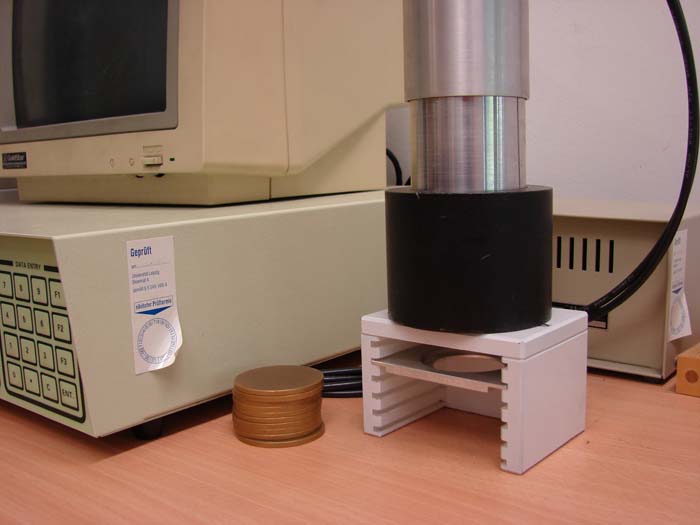ISO 9697 Gross Beta Activity in Drinking Water
The ISO 9697 standard provides a method for determining the gross beta activity concentration in drinking water. This method is crucial for ensuring compliance with regulatory limits on radioactive substances present in drinking water supplies, which can affect public health and safety.
Gross beta activity refers to the total beta radiation emitted by all radionuclides present above a certain energy threshold, typically 0.1 MeV. The standard outlines specific procedures for sample collection, preparation, and analysis using appropriate instrumentation such as low-background detectors or high-purity germanium (HPGe) spectrometers.
The testing process begins with the collection of water samples according to predefined guidelines specified in ISO 9697. These guidelines ensure that the samples are representative of the overall quality of the water supply. After collection, the samples undergo rigorous preparation steps including filtration and drying, followed by dissolution in suitable solvents.
The prepared solution is then introduced into a low-background counting system capable of detecting beta particles accurately. The detector measures the emitted radiation over a specified time period to calculate the gross beta activity concentration. Careful attention must be paid during sample handling and measurement to minimize interference from external sources of beta radiation.
This method is particularly important for monitoring radionuclides like tritium (H-3), carbon-14 (C-14), strontium-90 (Sr-90), and other beta-emitting isotopes that may be present in drinking water. These substances can originate from various sources including natural occurring radioactive materials, industrial waste, and nuclear accidents.
The results of this test are reported as the gross beta activity concentration, usually expressed in Bq/L (becquerels per liter). Regulatory bodies use these values to assess whether drinking water meets safety standards set forth by international organizations such as WHO (World Health Organization) or national governments. Compliance with these limits is essential for protecting public health from potential harmful effects of excessive exposure to beta radiation.
Understanding the role played by ISO 9697 in ensuring safe drinking water is critical for stakeholders involved in water quality management, including quality managers, compliance officers, R&D engineers, and procurement personnel. By adhering to this standard, laboratories can provide reliable data that supports informed decision-making processes related to public health.
The accuracy and precision of the results obtained through ISO 9697 depend heavily on proper sample handling techniques, appropriate instrumentation, and strict adherence to procedural requirements outlined in the standard. Skilled technicians who are familiar with both the theoretical aspects of beta radiation detection as well as hands-on laboratory skills are necessary for successful implementation.
Compliance with ISO 9697 not only ensures regulatory conformity but also enhances consumer confidence by demonstrating a commitment to maintaining high standards of water quality. This is particularly important given increasing public awareness about environmental issues and the need for sustainable practices across industries.
Benefits
- Accurate measurement of gross beta activity in drinking water
- Compliance with international standards ensuring safe drinking water
- Informed decision-making for public health and safety
- Enhanced consumer confidence through transparent reporting practices
- Precision analysis supporting sustainable industrial processes
- Reduction of risks associated with excessive exposure to beta radiation
- Supports regulatory requirements set forth by WHO and national governments
- Ensures consistent quality across different water supplies
Industry Applications
- Water treatment facilities monitoring for compliance with safety standards
- Regulatory agencies validating test results to ensure public health protection
- R&D departments assessing the impact of beta radiation on biological systems
- Environmental organizations tracking contamination levels in water sources
- Procurement teams selecting suppliers based on adherence to quality specifications
- Healthcare providers evaluating potential risks from contaminated drinking water supplies
- Utility companies ensuring reliable and safe water distribution networks
- Manufacturers developing products that interact with or consume drinking water
Eurolab Advantages
At Eurolab, our expertise in radiation and nuclear testing is unparalleled. We employ state-of-the-art equipment and highly skilled professionals who understand the intricacies of ISO 9697 compliance.
- Advanced instrumentation for precise beta activity measurement
- Dedicated team specializing in water quality analysis
- Comprehensive training programs for staff to stay updated on latest techniques
- Strong partnerships with regulatory bodies ensuring accurate interpretation of standards
- Robust quality assurance processes guaranteeing consistent test results
- Flexible service offerings tailored to meet specific client needs
- Continuous improvement initiatives driven by cutting-edge research and development
- Commitment to sustainability through efficient resource utilization and waste management practices





